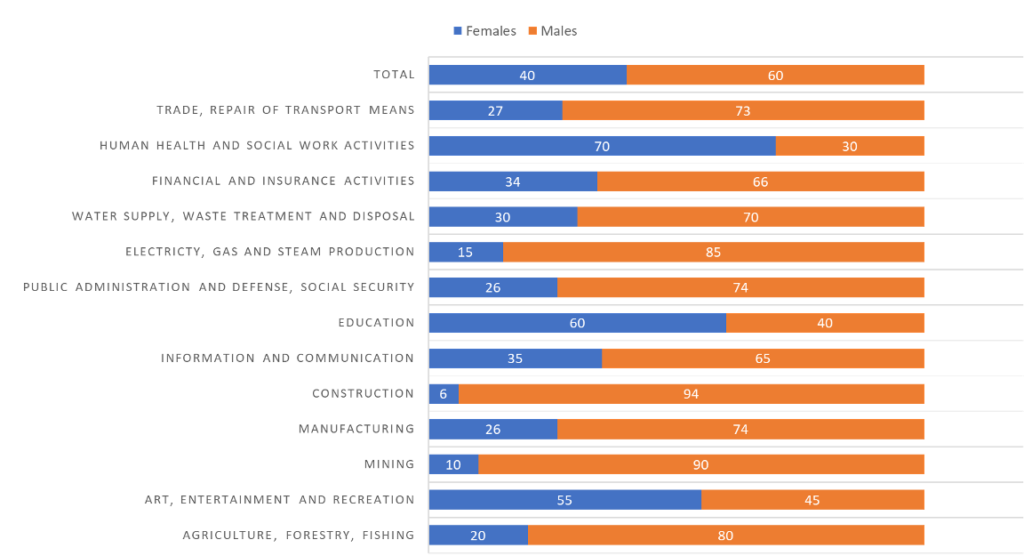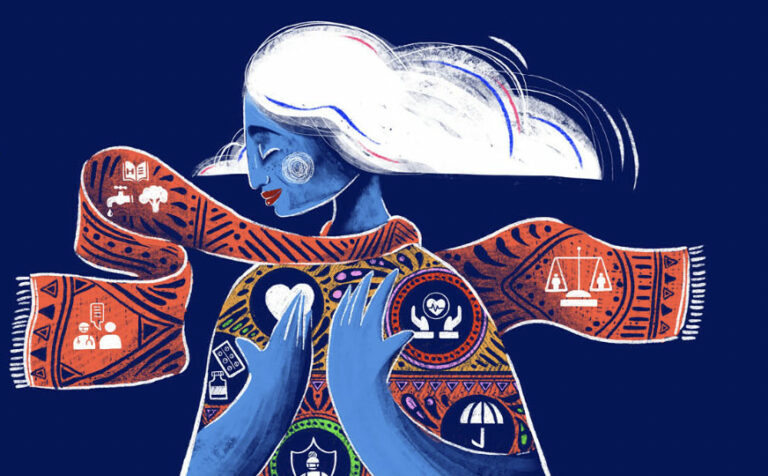
Imagine a labour market without gender-based discrimination…
I want to start with the thoughts of Muhammad Amin Rasulzadeh, the founder of the first independent state of Azerbaijan:
“If a woman is helpless, unaware of her rights and inexperienced, then half of the nation is sick and paralysed.”
It is already known to everyone that in most countries of the world, gender issues are prominent and of special significance. Countless studies have been conducted in this field, programmes have been created, and goals to be achieved have been determined. But why all these steps, in other words why does gender matter?
The main priorities of the work carried out in this direction are the provision of human rights, the protection of democracy, and the preservation of the rule of law.
The most important step to be taken to realise the set goals is to achieve gender mainstreaming. Gender mainstreaming means applying a gender-sensitive approach to all areas. Looking at the following statistics from the State Statistics Committee of the Republic of Azerbaijan for 2017, we can see the essence of achieving gender mainstreaming in the workforce.

According to the statistics, the number of female and male employees is different in various fields. This is primarily due to education. In order to eradicate such disparities, an analysis of gender issues should, first of all, be included in educational programmes, approaches that take into account the gender factor should be reflected, while it is essential to expand the activities of social workers, to increase interest in non-traditional fields in the selection of specialities, to attract men to the field of education where they are a minority, to eliminate gender stereotypes that impact them, and to implement stimulus measures.
Occupational segregation in the labour market, i.e., the degree of participation of women and men in the labour market, takes two directions – vertical and horizontal.
From the statistics shown above, it is clear that the number of women and men in the labour market differs according to each field. Although the number of women working in the fields of art, social work, education, and health is greater than the number of men, the ratio is the opposite in the area of construction, trade, and information technology. This ratio leads to the formation of horizontal segregation.
Vertical occupational segregation means that management personnel within the enterprise consist of more men, while lower positions are more likely to be held by women.
In order to eliminate this kind of discrepancy, the collective agreements of enterprises should stipulate obligations related to the elimination of gender inequality, should create conditions especially for women who have family commitments, but who produce value for the economy and the enterprise they work for, and who have a high work potential, so that they can reconcile their family and work obligations under part-time employment. In addition, it is important to make changes to the legislation to specify sanctions for job advertisements that reflect discrimination.
When talking about gender issues, it is necessary to touch on the concepts of equity and equality. Equality should be understood not only as giving equal rights to all, but also as creating suitable conditions for all. This is the difference between the concepts of equality and equity. Equality is understood as the rights presented to each person regardless of their characteristics, while equity is the provision of rights and the creation of conditions specific to each person to achieve the goal they have set for themselves. This is exactly the justice and fairness that we want to achieve.
If we approach these concepts at the legal level, we will see that such issues are also regulated in the legislation of the Republic of Azerbaijan. For example, in the Labour Code of the Republic of Azerbaijan, the determination of shortened working hours for women who are pregnant or who have children under one and a half years old, or for people with disabilities, the prohibition of involving pregnant women and women with children under the age of three, or employees under the age of eighteen, to work at night, these can be examples for establishing the above-mentioned concept of equity in legislation.
To sum up, gender-based discrimination in the labour market creates several risks in society. It weakens women’s social protection and access to benefits. At the same time, the economy also loses the value that a large labour force can form in the production process.
LATEST

Building Europe: Poland’s experience of joining the European Union and lessons for Ukraine

World Health Day 2024: My Health, My Right

EUREKA MEETS EUROPE – opportunities to develop and study. My experience

Can you wear pink in the workplace?

Go where your deepest fears lie: finding the courage to overcome gender barriers in STEM
More campaign pages:
Interested in the latest news and opportunities?
This website is managed by the EU-funded Regional Communication Programme for the Eastern Neighbourhood ('EU NEIGHBOURS east’), which complements and supports the communication of the Delegations of the European Union in the Eastern partner countries, and works under the guidance of the European Commission’s Directorate-General for Neighbourhood Policy and Enlargement Negotiations, and the European External Action Service. EU NEIGHBOURS east is implemented by a GOPA PACE-led consortium. It is part of the larger Neighbourhood Communication Programme (2020-2024) for the EU's Eastern and Southern Neighbourhood, which also includes 'EU NEIGHBOURS south’ project that runs the EU Neighbours portal.

The information on this site is subject to a Disclaimer and Protection of personal data. © European Union,